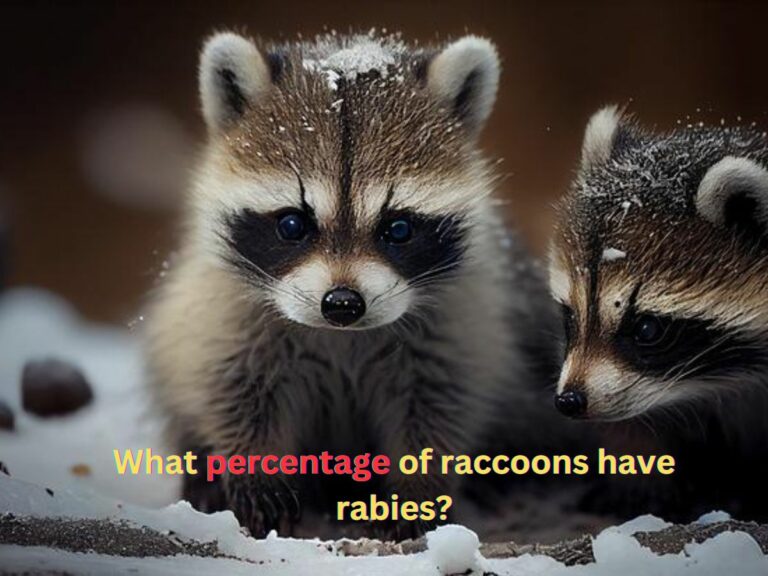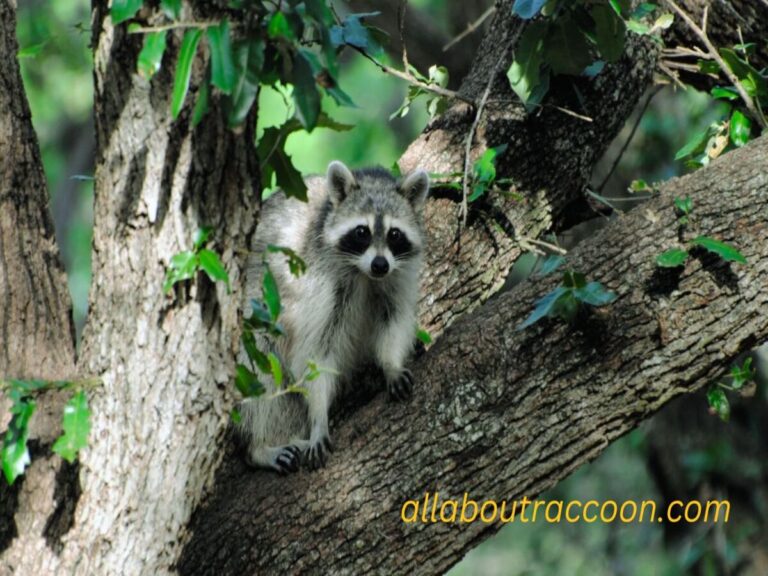Are Raccoons Related to Pandas?
Raccoons are cute-looking and curious creatures. They are well-adapted and can exist in various environments. But have you ever wondered about the intricate web of relationships that exist in the animal kingdom? Do you know what animal is closely related to raccoons? In this regard, it’s a fascinating query: Are raccoons related to pandas?
Sometimes, the most unexpected connections can leave us both surprised and intrigued. In this article, we’re going to discuss the question of whether raccoons are related to pandas or not. Here you will find accurate and well-researched information. So let’s come to read about the wonderful evolution of raccoons and pandas. The answer might surprise you.
Are raccoons related to Pandas?
Raccoons and pandas are not closely related to each other. Both raccoons and pandas have the same order “Carnivora”. Raccoons belong to the “Procyonidae” family, often referred to as the “raccoon family.”, while pandas family “Ursidae”. These two families are distinct and not closely related within the Carnivora order.
Despite their physical differences, these animals share a common evolutionary ancestor, which makes them related. However, they belong to different genera within the Procyonidae family. Red pandas is considered the distant cousin of North American raccoon. These two families are distinct and not closely related within the Carnivora order.
- Pandas are categorized in the subfamily “Ailuropodinae”, while raccoons belong to the subfamily “Procyoninae”. Nonetheless, despite this differentiation, they share some similarities.
- In 1825, after a long debate, the red pandas were put in the raccoon family Proconidae. The reason is that both raccoons and red pandas share some physical traits like skulls, ringed tails, and teeth.
- Pandas belong to different genera within the Procyonidae family. Raccoons are classified under the genus Procyon and are native to the Americas. They are recognizable for their distinctive black masks and ringed tails commonly found in across North and Central America.
- Pandas, on the other hand, belong to the genus Ailuropoda and are native to China. There are two main species of pandas: the giant panda and the red panda.
- Giant pandas are renowned for their black-and-white coloration and primarily feed on bamboo. However, Giant pandas are known as true bears and belong to the bear family Ursidae.
Despite their shared family and evolutionary history, raccoons and pandas have evolved to occupy different ecological niches, leading to distinct physical characteristics and behaviors. It supports divergent evolution.
Classification of Raccoons:
The family Procyonidae includes a variety of small to medium-sized mammals, many of which are found in the Americas. Raccoons are one of the most well-known members of this family. Here’s is a classification of raccoons:
- Kingdom: Animalia (Animals)
- Phylum: Chordata (Chordates)
- Class: Mammalia (Mammals)
- Order: Carnivora (Carnivores)
- Family: Procyonidae
Classification of Pandas:
On the contrary, pandas belong to the family Ursidae, which is commonly known as the bear family. Here’s a classification of pandas:
- Kingdom: Animalia (Animals)
- Phylum: Chordata (Chordates)
- Class: Mammalia (Mammals)
- Order: Carnivora (Carnivores)
- Family: Ursidae
There are two main species of pandas: the giant panda and the red panda. So, in summary, raccoons and pandas belong to different families within the order Carnivora, and they have distinct evolutionary histories and characteristics.
Evolutionary history of raccoons and pandas:
The evolutionary history of raccoons and pandas can be traced back to their common ancestors within the order Carnivora. Raccoons belong to the Procyonidae family and are closely related to other species like coatis and kinkajous. Giant pandas are part of the Ursidae family, making them more closely related to bears. Let’s explore the evolutionary history of raccoons and pandas separately:
Raccoons:
- Common Ancestry: Belong to the Procyonidae family within the Carnivora order.
- Ancestral Origins: A common ancestor lived around 40-50 million years ago during the Eocene epoch.
- Diversification: Evolved from primitive, dog-sized carnivores around 25-30 million years ago.
- Geographic Origin: Native to North America, with ancestors likely evolving there before spreading to South and Central America.
- Adaptations: Versatile and omnivorous diet, adaptability to various habitats including forests, wetlands, and urban areas.
Pandas:
- Common Ancestry: Part of the Ursidae family, which includes all bear species, within the Carnivora order.
- Divergence from Bears: Diverged from the common bear lineage around 19-24 million years ago, acquiring unique traits.
- Carnivorous Ancestry: Common ancestor of all bears likely carnivorous, pandas retained some carnivorous traits despite a primarily herbivorous diet.
- Bamboo Adaptation: Specialized in bamboo consumption, which developed over millions of years in bamboo-rich environments of China.

Are giant pandas closely related to bears?
Yes, giant pandas are indeed closely related to bears. Despite their unique appearance and specialized diet, they belong to the bear family, Ursidae. However, it’s worth noting that giant pandas share a closer evolutionary connection with raccoons than with other bear species. It is the reason they have some exceptional features that set them apart from their bear relatives.
- The giant panda is a special black-and-white bear from China, and it’s in danger because there aren’t many left in the wild—only about 1,800 of them.
- They eat mostly bamboo, and they have a special thumb-like bone to help them grab it.
- Pandas are part of the bear family, but they’re more like raccoons than other bears. They have a round face, small ears, and black eye patches that make them different from their bear cousins.
Are red pandas closely related to raccoons?
Red pandas and raccoons may look alike with their round faces and bushy tails, But they are not closely related in terms of their family tree within the animal kingdom. However, red pandas are more closely related to raccoons than bears.
- Red pandas belong to the family Ailuridae, and they are considered a unique and distinct family of carnivores. They are actually more closely related to other carnivores like weasels and skunks than to raccoons.
- Raccoons, on the other hand, belong to the family Procyonidae, which includes raccoons, coatis, and kinkajous. They are more closely related to each other within this family than to red pandas.
- So, even though they share some physical similarities, red pandas and raccoons come from different family branches in the animal kingdom. These resemblances likely developed independently due to similar environmental pressures, a phenomenon called convergent evolution.
Similarities between raccoons and pandas:
1. Mammals:
Both raccoons and pandas are mammals, which means they give birth to live babies and nurse them with milk.
2. Nocturnal:
Raccoons and pandas are active mainly during the night.
3. Digitigrade:
They both walk on their toes, giving them agile movement.
Differences between raccoons and pandas:
1. Appearance:
- Raccoons are smaller with gray-brown fur, a black “mask” around the eyes, and a ringed tail.
- Pandas are large with distinctive black-and-white coloration, with white bodies with black patches.
2. Habitat:
- Raccoons: Live in various habitats like forests, wetlands, and urban areas.
- Pandas: Found in bamboo forests in China’s mountains.
3. Diet:
- Raccoons: Omnivores eating fruits, insects, mammals, and human food.
- Pandas: Herbivores mainly eat bamboo, occasionally small animals.
4. Social Behavior:
- Raccoons are solitary with occasional loose associations.
- Pandas form complex communication and scent markings.
5. Conservation Status:
- Raccoons are not endangered, often found near humans.
- Pandas are in danger due to habitat loss and low reproduction rates.
Conclusion:
So, are raccoons related to pandas? The answer is yes, but it’s a distant and somewhat convoluted connection. They both belong to the same order, Carnivora, which places them in the same branch of the animal family tree. Additionally, both raccoons and pandas belong to different families. But because they’ve evolved differently, raccoons and pandas have unique diets and behaviors that set them apart from each other. They’re like two branches of the same tree that went their own way.
Nature’s family tree is like a big puzzle with lots of surprising links. Raccoons and pandas aren’t super close, but they’re still part of the same tree.
FAQs:
Pandas are more closely related to bears (Ursidae) than to raccoons (Procyonidae). Despite some physical similarities, genetic studies, and evolutionary evidence place pandas firmly within the bear family. Pandas share a common ancestor with other bear species, while raccoons have their own distinct evolutionary history within the raccoon family. However red pandas are more closely to raccoons while giant pandas are more closely to bears.
The raccoon family also includes kinkajous, olingos, olinguitos, ringtails, and coatis. The animal closely related to raccoons is the coati. Coatis belong to the family Procyonidae, which also includes raccoons. These animals share a common evolutionary lineage and are part of the same family. Coatis are native to the Americas, just like raccoons, and they are known for their long snouts and ringed tails.
The raccoons are called pandas because of their physical appearance related to pandas. Raccoons possess black patches around a raccoon’s eyes to similar the markings on a panda. Additionally, they tend to forage for garbage in urban environments just like pandas.
Bears are more closely to raccoons. Particularly, the giant panda is closely related to polar bears, while red pandas are more closely related to ferrets and raccoons. Both species share a common trait—they eat only bamboo and both have developed a false thumb to do work.
Raccoons are not closely related to bears. However red pandas are more closely to raccoons.







